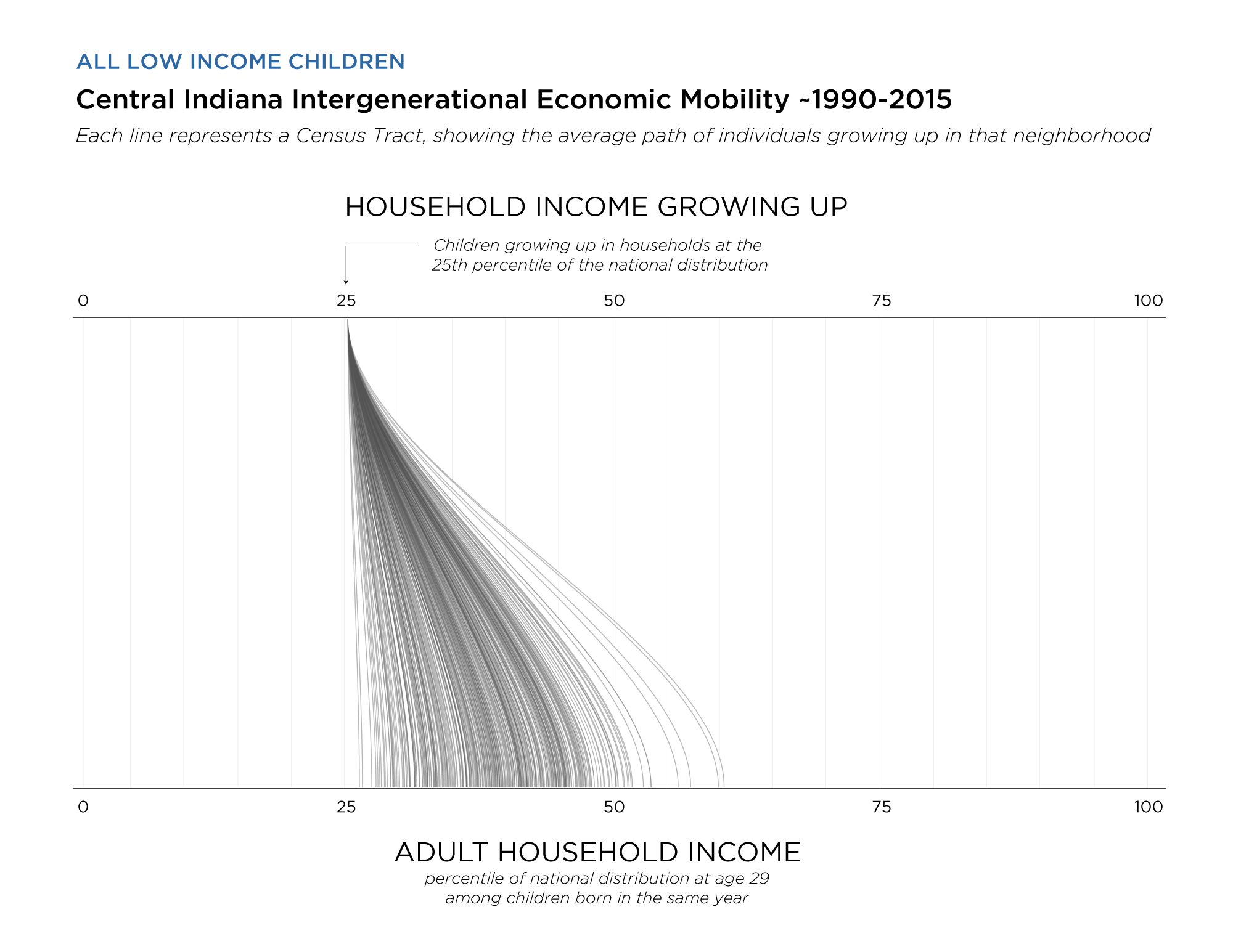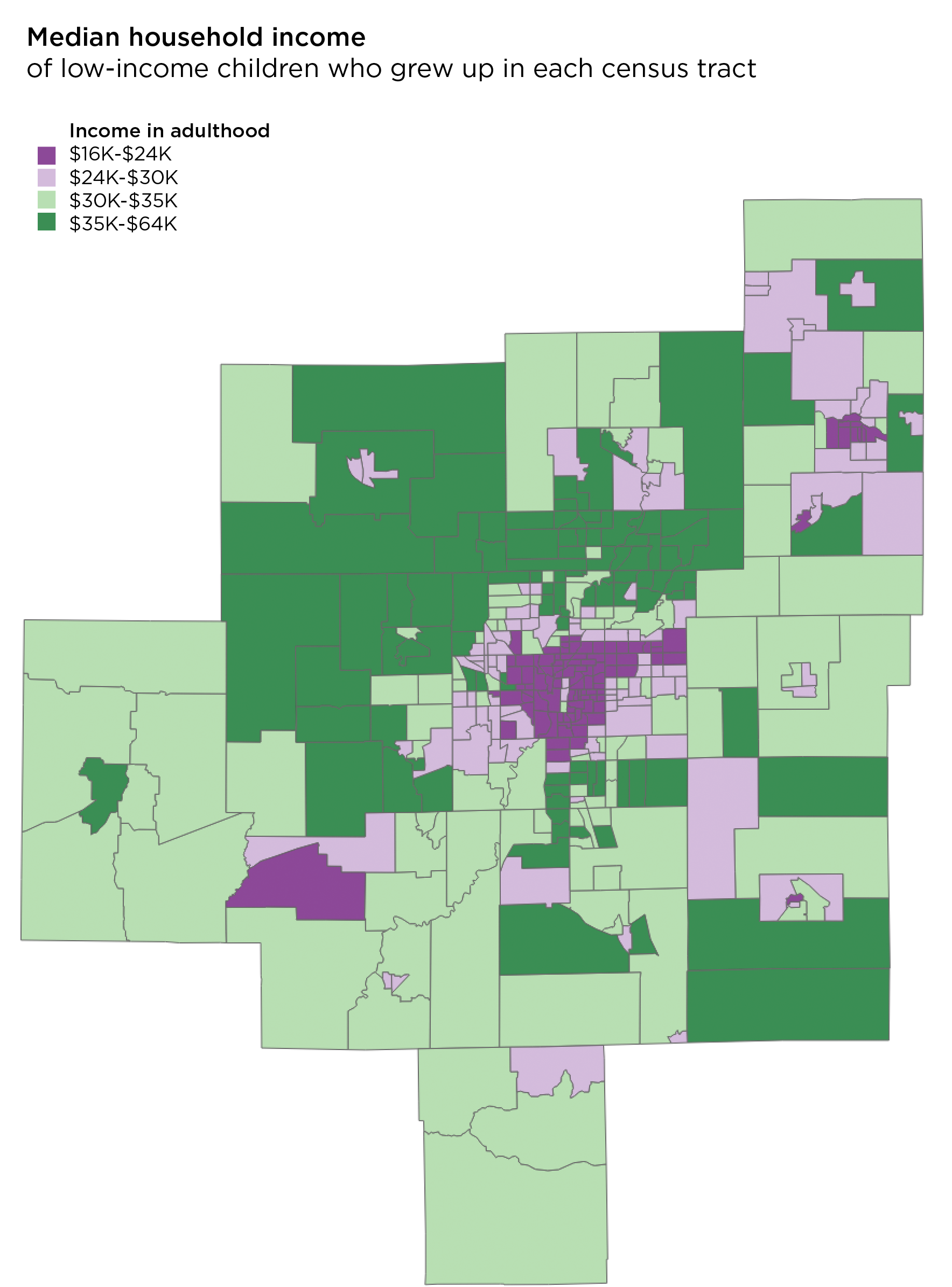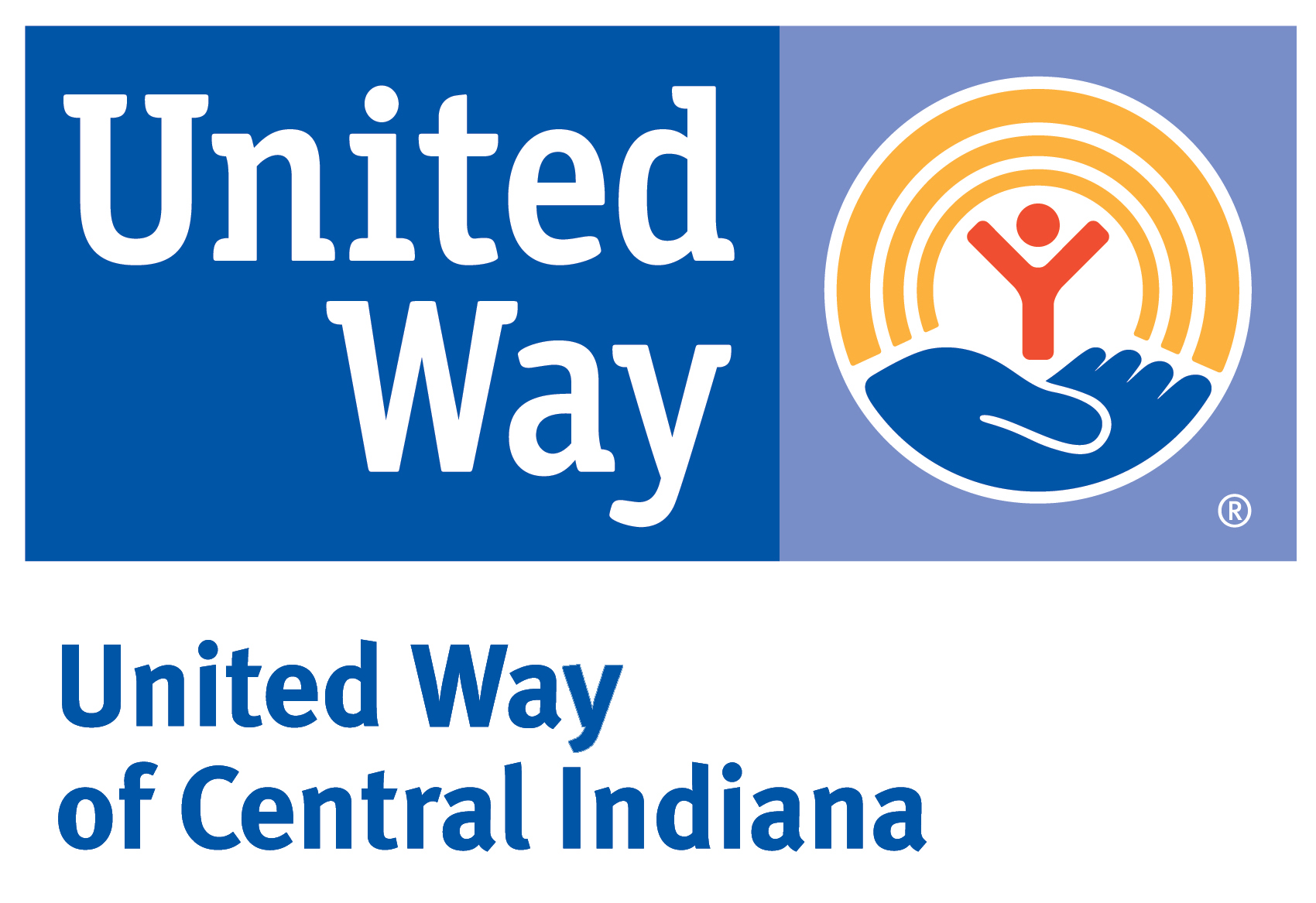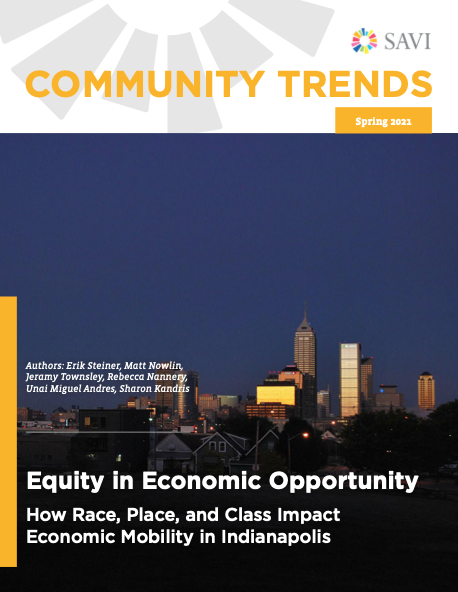Equity in Economic Opportunity
SAVI Talks - March 25, 2021Building on research by Harvard’s Raj Chetty and his team, we are developing new insights and highlighting findings about opportunity in Indianapolis neighborhoods. The average child born into a high-income family in Indianapolis earned $50,000 in household income when they were about 35. Children born to low-income families grew up to earn $27,000.
- Indianapolis’ level of opportunity for low-income children is lower than all but two of the largest U.S. cities. Only Atlanta and Charlotte have worse outcomes than Indianapolis.
- The average Black child born in Indianapolis earns $9,000 less than the average White child. There is a spatial disparity too: In many neighborhoods, children who grew up there earn less than $20,000 per year. In other neighborhoods, children born at the same income level grow up to earn $35,000 or more.
- Neighborhoods that are segregated clearly have lower opportunity outcomes for children. People born into Redlined neighborhoods have less economic opportunity, even when controlling for their parents’ income.


Articles and Story Maps
Explore other research and interactive content we have developed around equity.
Inspiring words from this year’s conference
At the end of this year’s Governor’s Conference on Service and Nonprofit Capacity Building, we gave each attendee a blank sheet of paper and asked them to complete the following sentence. When I leave this conference, I will _____________. The responses range...
Examining Housing Changes Over Time using US Census Data
Changes in Owner Occupied Houses in the KI EcoCenter Area: Block Group Units Comparing 2000 and 2010 Census Data By Jim Scheurich, PhD A change over time in owner occupied houses is one way to examine whether a community is growing, remaining stable, or growing in...
New Trends in Poverty Report Reveals Disparities across Demographics and Neighborhoods
1 out of 5 people in Marion County are in poverty. For a family of 4, that means an annual income of $23,500 or less. Last week, the US Census Bureau released the 2012 poverty rates for all counties across the nation. While the data show there was no significant...
The Impact of Aging Boomers
By Michelle Jones 77 million people were born in the U.S. between 1946 and 1964. (U.S. Census) Every 7 seconds, an American turns 50—that’s more than 12,500 people every day! (U.S. Census) For the first time ever, seniors comprise the largest size and...
Trends in Poverty: Marion County, Indiana 2000 to 2012
One in five people in Marion County are in poverty. Poverty is on the rise across the board, but some segments of the population are disproportionately affected. This report looks at the disparities in poverty by age, race, gender, education levels, and geography.
#INGovConf Tweet Chat Summary on Nonprofit Best Practices
Last week the Governor’s Conference on Service and Nonprofit Capacity Building hosts participated in a Twitter chat and shared their insights on nonprofit best practices. Did you miss attending the Twitter chat?Not to worry! We’ve captured it...
A Model to Mitigate Hunger
By Sharon Kandris It’s clear that hunger and food insecurity are growing problems in Central Indiana. We’ve recently partnered with two Central Indiana organizations (Northside Mission Ministry of Second Presbyterian Church and United Way of Central Indiana)...
Addressing Hunger in Central Indiana: Gaps and Opportunities
As you’re probably aware from recent news reports, Feeding America recently released its annual Map the Meal Gap report, with statistics on the state of hunger across the nation. According to its report, food insecurity (not always knowing where your next meal will...
Worst social crisis in the country?
One in three children in America grow up without a father in the home. Seventy-three percent of Black children in the U.S. are born to single parents. Only 16% of these single parents are men. These troubling statistics shed light on the fact that the absence of a...
New Demographic Trends Emerge in Marion County’s Growing Population
By Jay Colbert In celebration of Asian-Pacific American Heritage Month, I thought I’d explore some of the changing population trends in Indianapolis with regards to this demographic. Auch der Verband Pro Generika beklagt die steigenden Preise angesichts der...
Authors
Sharon Kandris
Associate Director,
The Polis Center
Jay Colbert,
Data Manager,
The Polis Center
Jeramy Townsley,
Visiting Research Analyst,
The Polis Center
Matt Nowlin,
Research Analyst,
The Polis Center
SAVI Talks Panelists
Patrice Duckett
Exec. Director
Fay Biccard Glick Crooked Creek Neighborhood Center
Amy Nelson
Exec. Director
Fair Housing Center of Central Indiana
Pamela Ross
VP of Opportunity, Equity & Inclusion
Central Indiana Community Foundation
SAVI Talks Moderator
Jill Sheridan
Health & Science Reporter
Indiana Public Broadcasting, WFYI
Event Partners





